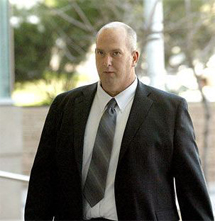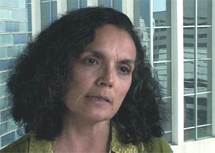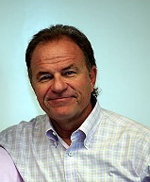Poisoning Tucson’s jury pool for border agent trial
By Linda Bentley | July 30, 2008
‘… worse, there were disturbing examples of people who tried to impact public opinion on the immigration debate … by bludgeoning the public … with their personal opinions’
T UCSON – Last month Attorney Jim Calle, on behalf of U.S. Border Patrol Agent Nicholas Corbett, 40, filed a motion for a change of venue, requesting Corbett’s trial be transferred to the U.S. District Court in Phoenix.
UCSON – Last month Attorney Jim Calle, on behalf of U.S. Border Patrol Agent Nicholas Corbett, 40, filed a motion for a change of venue, requesting Corbett’s trial be transferred to the U.S. District Court in Phoenix.
Ending with a hopelessly hung jury on March 10, 2008, Corbett’s first trial on charges of second-degree murder, manslaughter and negligent homicide for fatally shooting Francisco Dominguez-Rivera, 22, was declared a mistrial. Corbett says he acted in self defense.
Calle explained the facts surrounding the Jan. 12, 2007 incident, when Corbett, whose responsibilities require he enforce the anti-terrorism, immigration and drug laws of the United States, was performing his duties as a Border Patrol agent.
While working in an area between Douglas and Naco, Arizona, Corbett spotted and tried to apprehend three brothers, Francisco Dominguez-Rivera, Jorge Dominguez-Rivera, and Rene Dominguez-Rivera, along with Jorge’s girlfriend, Sandra Vidal Guzman, who entered the United States illegally.
Later during a confrontation, Francisco Dominguez-Rivera picked up a rock to assault Corbett, who shot and killed him.
Not only was there ongoing coverage of the Corbett case, Calle said, “There also have been numerous print and television stories on all manner of border issues directly related to the mission and activities of the U.S. Border Patrol,” which he said included daily reports of drug and alien seizures, vehicle chases, rollovers, shootings, home invasions, alien deaths, alien rapes, border security programs, and the development of physical and electronic fences, often as the top print and television stories of the day.
And, while there may be some potential jurors from southern Arizona who may not have heard of Corbett’s case, Calle said they have all heard at least some of the immigration and border-related issues that are covered almost daily.
According to Calle, coverage of Corbett’s case was “geographically pervasive and persistent before, during and after the first trial.” He named specific media outlets in southern Arizona that ran anywhere from 24 to 60 stories.
He pointed to a story in the Sierra Vista Herald, which he said evidenced how these issues frame a person’s point of view regarding Corbett’s guilt or innocence, with Cecile Lumer of Citizens for Border Solutions stating a conviction in this case is important. “We are glad there is going to be a retrial. We feel that if he is freed, it says to the Border Patrol that you can do whatever you want and you can kill people.”
Calle wrote, “The trial coverage was not always accurate, and, worse, there were disturbing examples of people who tried to impact public opinion on the immigration debate as a whole by bludgeoning the public – via the media – with their personal opinions,” and quoted Pima  County Legal Defender Isabel Garcia, who appeared on KOLD TV-13 immediately after the mistrial on March 10, and, in the context of the Corbett case, said, “Arizona is ... and the border lands reminds me of the south in the post-slavery days where killings and beatings were committed with total impunity. And I sure hope that is not the case in Arizona but we have seen time and time again the injustice done to this community.”
County Legal Defender Isabel Garcia, who appeared on KOLD TV-13 immediately after the mistrial on March 10, and, in the context of the Corbett case, said, “Arizona is ... and the border lands reminds me of the south in the post-slavery days where killings and beatings were committed with total impunity. And I sure hope that is not the case in Arizona but we have seen time and time again the injustice done to this community.”
Calle said Garcia’s inflammatory comments clearly suggested Corbett had killed the decedent with total impunity and justice would only be done if he was found guilty, adding, “Her comments were particularly incendiary because Ms. Garcia is an official of the Pima County government, one of the two people in Pima County charged with running public defender organizations devoted to defending the criminally accused.”
Cochise County Special Prosecutor Grant Woods also spoke to the media after the mistrial, proclaiming “new information” would be introduced in Corbett’s retrial to show, “You are not dealing with a border patrol agent who simply got mad and made a big mistake one time. You are dealing with someone who has a pattern to this.”
Calle said Woods made the comments knowing “the pattern” of which he spoke is not admissible at trial and, therefore, the only reason for him to say that “is to tar and feather the defendant in the public as a serial criminal offender in the hope of prejudicing the jury pool and swaying them towards a conviction during the next trial.”
Woods, while serving as Arizona Attorney General during the 90s, was cited and fined $1,400 for immigration law violations by employing an illegal alien as a nanny and continuing to employ her after learning of her illegal status.
In addition to the media coverage, jurors in the Corbett trial were subjected daily to the remarks of protestors occupying the courthouse steps and a shrine for the alleged victim, encircled with flowers and hundreds of lit candles.
Calle said, “This shrine sat in the middle of the courthouse’s exterior entrance for the duration of the trial. Jurors had to pass by this spectacle every day.”
On July 14, Calle filed his reply to the state’s response to his motion for change of venue, in which he mentioned Garcia’s protest of Maricopa County Sheriff Joe Arpaio during a book-signing event where demonstrators “viciously attacked” an Arpaio piñata outside a Tucson book store to express their opposition to his immigration law enforcement policies.
Calle wrote, “The scene was reminiscent of anti-American protesters in the Middle East,” whereas Garcia picked up Arpaio’s severed head and paraded it around “to cheers and chants of her protesting compatriots,” arguing there is “more than enough evidence of a polarized jury pool in southern Arizona to warrant a change of venue.”
 Woods, although professing no objection to the change of venue, suggested the court employ a substantial questionnaire to allow detailed vetting of jurors before ruling on the motion, to which Calle countered would result in the impossibility of proceeding as scheduled if sufficient prejudice was found among the potential jurors to warrant a venue change.
Woods, although professing no objection to the change of venue, suggested the court employ a substantial questionnaire to allow detailed vetting of jurors before ruling on the motion, to which Calle countered would result in the impossibility of proceeding as scheduled if sufficient prejudice was found among the potential jurors to warrant a venue change.
Last week, Woods filed a motion to continue the trial currently set for Sept. 9, 2008, citing a trial conflict.
The court has not yet ruled on either motion.
Top Photo: Nicholas Corbett
Middle Photo: Isabel Garcia
Lower Photo: Grant Woods
Courtesy photos
